Chris Zukin at Meadow Outdoor has compiled a list of 101 mistakes billboard companies make. He writes Billboard Insider:

This started a few months ago during a Vision and Strategy meeting. We are talking about the things we are doing well, and those things that will help us to continue to grow. Our Controller said: “What about the bad things that billboard companies can do?”. Wow, great idea. So, the 8 of us in that meeting all wrote down the mistakes that Meadow has made and that we have seen other billboard companies make. I started compiling those specific items into a list, and decided to document 101 mistakes, errors, omissions, and poor habits into this list. I then sent the draft list to every employee at Meadow and got several excellent contributions. This compilation is a group effort of the employees at Meadow Outdoor whose 40 employees have a combined total of over 650 years of Outdoor Advertising experience.
- Poor lease agreements: e.g., short-term leases, buildouts, termination on sale.
- Paying too much for a lease. High lease rate %.
- Weak sales effort. We are a direct sales business.
- Depending on third parties to sell inventory.
- Neglecting sign structure maintenance, rusty columns, and dirty skirts.
- Insufficient safety training and no regularly scheduled safety meetings.
- Poor vinyl installation, resulting in sagging vinyl and wrinkles.
- Allowing obstructions to remain or to grow in front of a display.
- Running too lean, cutting muscle.
- Not installing full size “Advertise Here” message on unsold inventory.
- Poor Creative.
- Being over-leveraged—makes surviving downturns difficult.
- Complex sales commission compensation plans.
- Impatience in negotiating: Pleasant, persistent pressure is a winning strategy.
- Swinging at every pitch. Don’t. There are no called strikes when looking at deals.
- Neglecting lease file maintenance and documentation.
- Hiring people based on cost rather than value.
- Too many management layers.
- Micromanaging employees.
- Rate ego: waiting too long to drop rate.
- Lack of accountability at all employee levels.
- Failure to do extensive due diligence when buying billboard assets.
- Poor illumination control and maintenance.
- Weak expense control: must be diligent and fierce regarding expenses.
- Not thinking out of the box. “That is the way we have always done it” mentality.
- Indulging management ego: making decisions because you can, not because they are good decisions.
- Sales complacency: believing that doing OK is good enough.
- Taking trade. Cash only, please.
- Milking cash out of the operation.
- Letting the accountants run the company.
- Overbuilding in a market.
- Soft on collections: afraid to “offend” late paying customers.
- Not maintaining a low (under 20%) lease cost-to-revenue ratio.
- Not pushing back on advertiser-supplied bad creative designs and prints.
- Not running credit checks on new customers.
- Not requiring personal guarantees.
- Taking short-term contracts: 12-month minimums, please.
- Not enforcing in-house billboard design best practices. Displays can become cluttered, unreadable, ineffective.
- Irregular structure inspections.
- No formal contract renewal system.
- Poor communication between departments/employees.
- Not getting a title report prior to every new build.
- Not recording a memorandum of lease for every leased location.
- Slow digital deployment.
- General complacency: Billboard companies can run on inertia. . . for a while.
- Inexperienced senior management.
- Being overly litigious.
- Not riding the inventory often: need to keep an eye on your billboards to confirm the structures and displays look good.
- Not looking at all opportunities with the “there will always be another streetcar” mentality.
- Not turning off lights on unsold inventory.
- CPI or % increases in lease consideration. Just use a flat $ dollar amount, like $50/year.
- Lease Terms that just end: include year-to-year and successive terms after the initial term.
- Agreeing to “sequential liability” terms in an agency advertising contract.
- Have not set up back-up and redundancy systems for all aspects of the business: billing, safety, A/P, collections and charting.
- Not buying title insurance for every easement and high-value lease.
- Lack of trust between internal parties.
- Fear of borrowing: Being afraid to borrow prudently can slow growth.
- Not fixing a maintenance issue right away: once noticed, fix it or paint it now.
- Internal family conflict and disagreement on management.
- Failure to maintain active and positive relationships with the city governments in their markets.
- Allowing bad paying advertisers to remain “up:” Pull down the copy and file a lawsuit.
- Not belonging to a State OOH Association.
- Inconsistent or deficient policies, procedures and controls.
- Not using a Checklist: Read The Checklist Manifesto book!
- Old dated website.
- Not a member of national OOH organizations like the OAAA or IBO.
- Signing an ad agency’s “insertion order” and not requiring them to sign your contract.
- Not investing in superior creative personnel and resources.
- Posting advertising for noxious businesses like adult bookstores, strip clubs, or any SOB. Makes us look bad.
- Too high occupancy—rates are too low.
- Not supporting salespeople: Billboard companies need these front-line fighters to grow revenues.
- Anything under 20 years is too short of a lease term.
- Failing to get custom structural engineering for every unique location.
- Allowing partners, liens, and side deals to encumber billboards.
- Poor company culture: fear, complacency, unmotivated employees.
- Not maintaining good relationships with lessors and advertisers.
- Not searching for the best vendors and independent contractors in their field.
- Not fostering positive a relationship with state regulators.
- Not choosing to grow: It is death by attrition.
- Poor customer service: unresponsive to customer needs.
- 2-hour martini lunches at the golf club.
- Unsafe construction and installation practices.
- Not conducting a financial analysis for every new build to ensure a proper ROI.
- Not checking for overhead powerlines when leasing a new location.
- Failure to obtain a property line survey before building a new billboard.
- Building a new billboard on the wrong side of the property line.
- Getting the wrong signature on a lease agreement: must be the current legal vested owner
- Not getting an underground locate before digging the hole for a new billboard.
- Not having a clean/clear title, free of liens, on the property prior to building: Must be in first position.
- Mailing lease payments late. In some states a late payment can allow cancellation of the lease.
- Not converting to LED lighting: big money saver and visibility booster.
- Not subscribing to “BILLBOARD INSIDER™.”
- Are not a member of the Chamber of Commerce in at least two markets.
- Does not donate space to one or more local charities.
- Posting negative or controversial copy: It can adversely affect the company.
- Having a non-mobile-friendly website.
- Not having a social media presence: social media lends credibility.
- No incentive programs for employees (based on efficiency).
- Failing to instill “ownership thinking” in all employees.
- Not allowing dogs to visit the office.
- Not reading this list.
Billboard Insider’s take: A terrific list which covers all aspects of running an out of home company (29 admin mistakes, 21 sales mistakes, 18 leasing mistakes, 16 operations mistakes, 11 financial mistakes and 5 creative mistakes). Our favorite is item 92!
To receive a free morning newsletter with each day’s Billboard insider articles email info@billboardinsider.com with the word “Subscribe” in the title. Our newsletter is free and we don’t sell our subscriber list.
Paid Advertisement








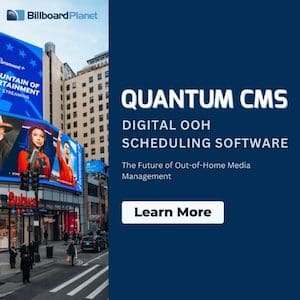
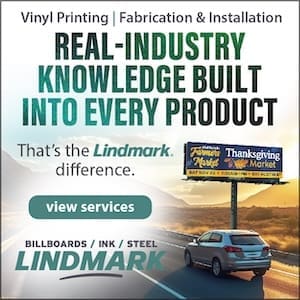

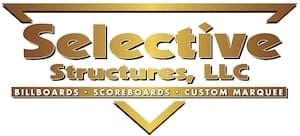
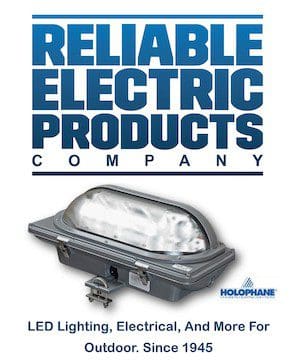
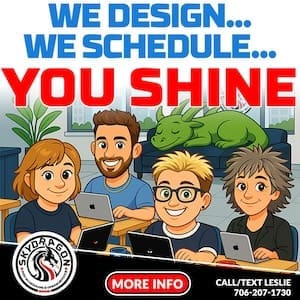
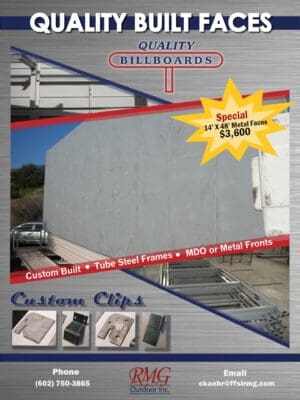



There are a lot of great points on this list. It makes me want to take it and write it out in chronological order, from what is required to put the billboard up all the way to renewal.
1. Structures
Permits, leasing, full negotiation standards, billboard structure materials, installation, timelines, vendors, backup materials, etc.
2. Sales
Research, Prospect, Write Emails, Phone Calls, Social Media Engagement, Self-Promos, Contact Current Clients
3. Interested Client
Proposal, Photosheet, Professional Photos, Audited Metrics, Closeup & Approach, Maps, Lat/Long, Descriptions, Selling Points, Demographics, Good Rates, Reserve Booking in Charting
4. Creative
Works on Closeup, Works on Approach, Vector Logo, High Resolution Images, Brand Colors, Works in 3 Seconds, Multiple Creatives per Service/Product, Design Creative to Location
5. Ordering Production
Order vinyls correctly, order correct material for length of contract, save money by using eco-flex instead of 7oz vinyl, collect pre-payment before ordering, confirm warranty, shipping, aim for 2 weeks ahead, charge for rush ordering to make up for costs, confirm artwork looks good and send client final approval of proof
6. Installation
Receive & organize vinyls & assign dates for installation, schedule routes based on installs to save money on gas and reduce vehicle depreciation, safety harnesses & equipment, optimize safety
7. Follow-up
Take professional proof of performance photos, send a mini billboard, send a thank you card, follow up on performance, adjust if needed, communicate after the sale & keep in touch, offer renewal 4-8 weeks ahead.
#100 is my favorite, dogs are a huge morale booster!
Great article Chris! You are the OG Yoda of outdoor!
Excellent article. The only thing I’d add to Chris’s list is “not having a good CRM program as you grow.” There are several great Customer Relationship Management systems in the marketplace. Watchfire uses Salesforce, but other CRMs such as Pipedrive, MondaySales, and Hubspot are highly rated and more suited for shops with less than 5 users. A good CRM system is essential if you want to centralize your customer data and streamline all customer interactions. It will enhance your customer relationships and help drive the growth of your business.